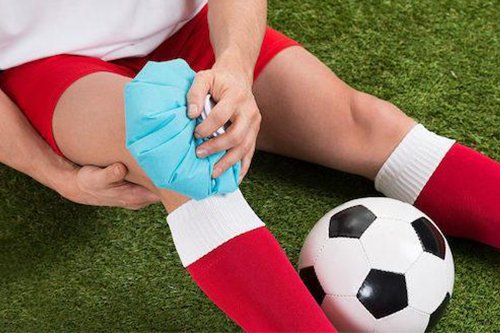Sports Rehabilitation
Sports rehabilitation, also known as sports physical therapy, is a specialized branch of physical therapy focused on treating and preventing injuries related to sports and physical activities. It aims to help athletes and active individuals recover from sports-related injuries, improve their performance, and return to their respective sports or activities safely. Sports rehabilitation programs are tailored to meet the specific needs of athletes and are designed to address the unique demands of different sports.
Evaluation and Assessment: Sports rehabilitation begins with a thorough evaluation of the athlete’s condition and medical history. The physical therapist assesses the injury or condition, identifies the underlying causes, and determines the athlete’s physical capabilities and limitations.

Symptoms
Pain: Pain is a prevalent symptom experienced by athletes with sports injuries. The type and intensity of pain can vary, ranging from mild discomfort to severe and sharp pain. Sports rehabilitation aims to manage pain through various techniques, such as manual therapy, modalities (e.g., heat, ice), and therapeutic exercises.
Swelling: Swelling, also known as edema, often accompanies sports injuries, especially those involving sprains, strains, and contusions. Sports rehabilitation may include techniques to reduce swelling, such as elevation, compression, and gentle movements.
Limited Range of Motion: Sports injuries can lead to decreased flexibility and range of motion in the affected joint or muscle. Rehabilitation programs focus on restoring and improving the athlete’s range of motion through stretching and mobility exercises.
Muscle Weakness: After an injury or surgery, muscles around the affected area may weaken due to reduced use and disuse atrophy. Sports rehabilitation involves strength training exercises to help athletes regain muscle strength and function.
Treatment
Injury Assessment: Sports rehabilitation starts with a thorough evaluation of the athlete’s injury or condition. The sports physical therapist assesses the nature and extent of the injury, identifies any underlying factors contributing to the problem, and formulates a personalized treatment plan.
Pain Management: Managing pain is an essential part of sports rehabilitation. Therapists use various techniques, such as ice or heat therapy, electrical stimulation, and manual therapy, to reduce pain and inflammation in the affected area.
Range of Motion and Flexibility Exercises: Sports rehabilitation often involves exercises to improve joint range of motion and flexibility. These exercises help restore normal movement and prevent stiffness in the injured area.
Strengthening Exercises: Strengthening exercises are designed to rebuild the strength of muscles and surrounding structures affected by the injury. Therapists may use resistance training, bodyweight exercises, and functional movements to target specific muscle groups.
Proprioceptive and Balance Training: Proprioception refers to the body’s awareness of its position in space. Balance and proprioceptive training help athletes regain stability, prevent falls, and reduce the risk of re-injury.
Benefits
- Injury Recovery: Sports rehabilitation focuses on providing targeted treatment and exercises to aid in the recovery process after a sports injury. Whether it’s a sprain, strain, ligament tear, or fracture, rehabilitation helps athletes regain strength, flexibility, and function in the injured area.
- Faster Return to Sport: The primary goal of sports rehabilitation is to facilitate a safe and timely return to sports activities. By following a well-designed rehabilitation program, athletes can recover quicker and get back to their sport with reduced risk of re-injury.
- Individualized Treatment Plans: Sports rehabilitation programs are tailored to each athlete’s specific needs and the nature of their injury. Physical therapists create personalized treatment plans based on the athlete’s condition, goals, and the demands of their sport.
- Improved Performance: Even in the absence of injuries, sports rehabilitation can help athletes enhance their performance. Therapists work on optimizing movement patterns, correcting imbalances, and strengthening weak areas to improve overall athletic abilities.
- Pain Management: For athletes dealing with chronic pain or overuse injuries, sports rehabilitation can provide effective pain management strategies. Therapists use various modalities and techniques to alleviate pain and discomfort, allowing athletes to train and compete more comfortably.
Precautions
- Cross-Training: Incorporate cross-training activities into your rehabilitation program to work different muscle groups and reduce the risk of overuse injuries.
- Rest and Recovery: Allow adequate time for rest and recovery between workouts and sports activities. Rest is crucial for the body to repair and rebuild tissues.
- Proper Equipment: Ensure that you use appropriate sports equipment, such as braces, supports, or protective gear, if recommended by your healthcare team.
- Stay Hydrated: Proper hydration is essential for overall health and athletic performance. Drink enough water before, during, and after exercises and sports activities.
